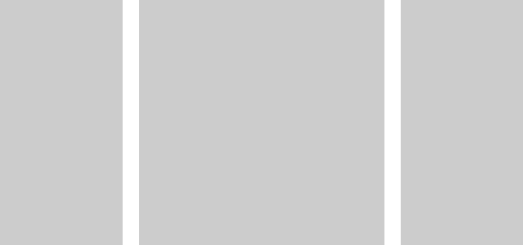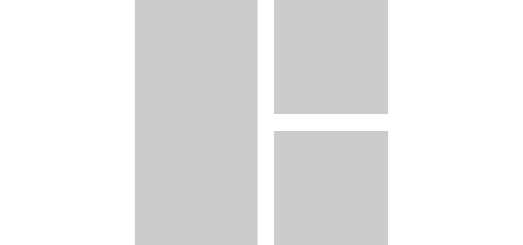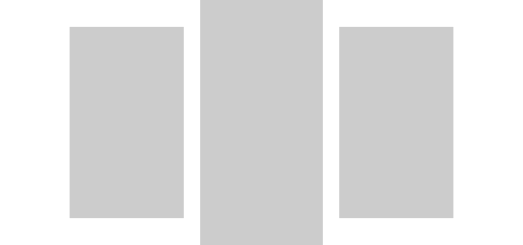What in the world is a triptych print? Is it a good choice of wall art? This blog explains this form of art decor, specifically to photo prints. It examines the different types of triptychs as well as some pros and cons.
A triptych print (pronounced “triptik”) simply is a piece of wall art composed of three separate pieces. The word “triptych” comes from the Greek “triptychos”, which means “having three folds“. While a triptych can be represented as a photographic artwork, it is not the only art medium. Originally triptychs were used in Cristian art in the form of altar paintings, which were hinged together. Today triptychs are seen in all kinds of art such as paintings, carved panels, wall decor, and photography artwork.
However, for the purposes of this blog I will focus primarily on triptych fine art prints.
There are different combinations of triptychs, determined by the image size, shape and positioning of the separate parts on the wall.
The most common scenario is when the image is split into 3 equal parts. This means that the shape and size of the print panels are identical in shape and size. For example, those can be 3 square shapes for an overall panoramic image with a total ratio of 1:3. Alternatively, the wall art can be split into 3 vertical rectangles when the overall image is a square or a standard 2:3 photograph.
Coal Mine Canyon, Arizona | LIMITED EDITION FINE ART PRINT 50
Lupin Wildflowers | Gothic, Colorado | LIMITED EDITION FINE ART PRINT 100
Although less common, the 3 pieces may be composed of parts that are not equal in shape. Below are two examples of those.


Furthermore, triptych prints vary by the direction of their “cutting”. Meaning, was the image separated horizontally, vertically, or both. In my observation however, in most cases the cutting is vertical.
Triptych prints can also differ in the way they are positioned on the wall. It is quite typical for the panels to be perfectly aligned in a straight line. This especially is the case when they compose a larger single photograph. Therefore, the final piece looks a little bit like a giant puzzle of 3 elements. Every now and again though, a triptych is made of pieces, not positioned in a straight line.

Another variation in wall positioning is the distance between the separate prints. Depending on the overall size of the triptych this distance can vary. However, the main difference I am trying to point out is that sometimes there is a distance between the panels, and other times they are touching each other. There is really no rule here and this is a matter of personal taste. Also, when the choice is made to separate the prints the gap between them is a matter of personal choice.
Again, starting with the most common scenario a triptych print consists of one single photograph, separated into 3 pieces. Nevertheless, this is not always the case. One example is when different abstract images are combined together. Another example is when the images are separate photographs but of a similar object/theme and they complement each other.
Although triptych prints can look quite elegant as wall decor, there are some considerations to be aware of. This next section briefly describes the pros and cons.
Larger Prints – Imagine that you have found a fine art nature photography masterpiece that will perfectly match your interior and you are ready to purchase it. You talk to the artist photographer and explain that you want to go really big and therefore the size you want is 40×120 inches. You further mention that you cannot afford that size in acrylic, so you have decided to go with a metal print. The photographer explains that the largest size any printmaker can produce in metal is 96 inches. For this reason the largest print size you can get is 32×96. Well in this case you can opt for a triptych print and get what you want. You can separate the image in 3 squares of 40×40 inches and end up with the overall size you are looking for.
Something different – Whenever a single image is separated into 3 parts it creates a more unique form of art than what we are used to traditionally. Even though not everyone likes triptychs they are a different form of wall decor expression for those who do appreciate them.
Transportation & shipping – If you are ordering a triptych print, chances are that it will be easier to ship and/or transport. The larger the overall artwork size, the more relevant this point will be. For example, if you order a triptych and have it shipped the 3 pieces can be packed into a single box which will be a third of the size. Therefore, if you are paying for shipping you will save some money there. Another scenario might be where you have purchased a print off a fine art gallery wall and are taking it home with you. Once again, you can transport 3 pieces much easier than a single larger one.
Requires precision – There are some considerations when splitting a single image into 3 pieces. This is determined by your choice of having a gap or not (see section above – Wall positioning) between the panels, once they are mounted on a wall. If your choice is to have the panels touch things are pretty straightforward and the photo just needs to be split into perfectly equal parts. However, if you decide to have a gap you may consider having an actual strip removed from the original image, where the cut will appear. For example, imagine that you decide to have a 1 inch gap between the panels. That means that the two cuts need to be 1 inch wide strips removed from the original photograph. The reason for this is so that when the final prints are mounted 1 inch apart the continuation from one to the other will be natural. If no strip is removed and there is a gap it may look a bit weird. This will be more pronounced with larger gaps.
Nevertheless, regardless of whether a gap or not is left on the wall, the printmaker will have to be very precise in splitting and printing the image with quality. This is necessary, so that the final product will look great on your wall.
Odd with some photos – Usually every photograph has one or more main objects in it. This is also the case with landscape photography where you can have a mountain, a tree, a rock, or some other natural object. Depending on the position of this object, a tryptic may not be the best option. For example, if the cut happens to be straight through the main object of the photograph. Imagine an image of a gorgeous tree which is split into three parts and one of those splits happens to be straight down the middle of the tree. You may not like that very much.
Challenging wall mount – There is nothing like buying a high quality fine art print and mounting it crooked on the wall. This is crucial with a single print and is even more important with a triptych. The challenge here is that the panels have to line perfectly and the gaps between them need to be straight and equal. This type of a wall mount requires a lot more skill and precision.
Limited framing choice – If you are an art collector who really likes framed prints, a triptych may not be your best option. I will say that there are some cases when a thin simple frame may look good on a triptych. However, I would argue that a wide frame, especially if a liner is added, will not look very appealing on the wall. It will be in a sense the opposite of contemporary fine art. Therefore, triptychs may limit the frame choice because they may not look elegant in all cases.
If you are ready to purchase your next fine art print, should you actually go with a triptych or stick to a single piece? I would not venture to advise you one way or another. However, I will advise you to consider the following. First, ensure that you really find the final look more than that of a solid print. Second, make sure that whoever will be producing the print will actually do a precise job of cutting and printing. Third, be sure that you have a way to correctly hang the 3 pieces on your wall. Finally, confirm that the splits are occurring in a way that will not compromise the main objects and the overall look of the image.
Gintchin Fine Art offers exclusive limited edition fine art photography by Lazar Gintchin, a nature and landscape photographer specializing in large format size prints. Each image in Gintchin’s portfolio is a unique and limited edition print. The gallery includes high-quality wall art prints in acrylic and metal mediums, providing a luxurious fine art presentation. With a diverse range of genres to choose from, art enthusiasts can curate a collection that reflects their aesthetic preferences.